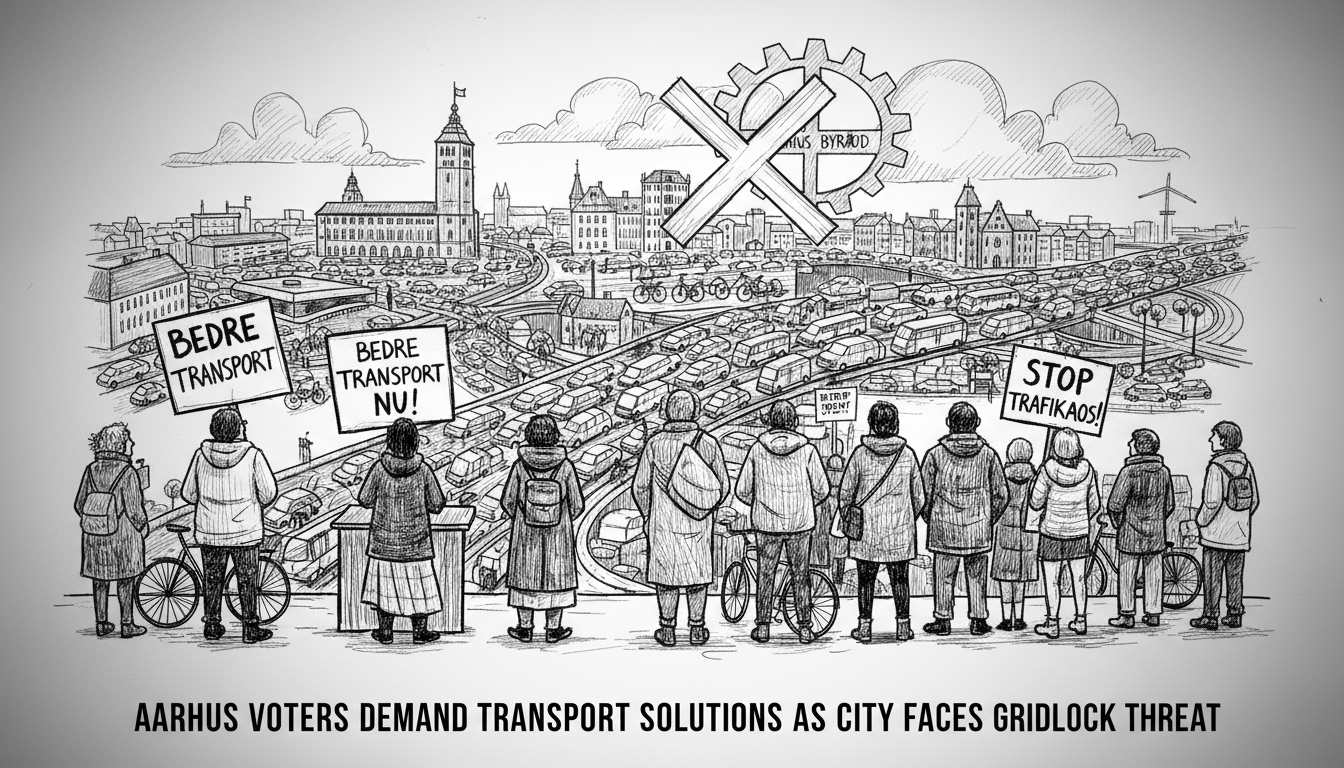Transportation dominates political debates in Aarhus as municipal elections approach. City council members warn that Denmark's second-largest city risks complete traffic collapse within a decade without immediate action.
The infrastructure crisis has become the central issue for Aarhus voters. Local politicians describe a city on the brink of transportation paralysis. Current systems cannot handle growing population pressures.
Aarhus has experienced rapid urban growth in recent years. The city's population expanded while transportation infrastructure lagged behind. This imbalance creates daily congestion problems for commuters.
Denmark's municipal elections determine local policy direction for the next four years. Voters will choose representatives who control urban planning decisions. Transportation investments require substantial political will and budget allocations.
What makes Aarhus particularly vulnerable to gridlock? The city sits on the eastern coast of Jutland with limited expansion options. Geographic constraints compound infrastructure challenges. Major roads funnel traffic through narrow corridors.
International residents and businesses watch these developments closely. Transportation reliability affects Aarhus's appeal as a destination for global talent. Companies consider mobility when choosing European headquarters locations.
Cycling infrastructure represents part of the solution but cannot solve everything. Denmark already boasts excellent bike networks. The real challenge involves moving people across longer distances efficiently.
Public transportation requires significant upgrades. Bus services struggle with reliability during peak hours. Light rail extensions face budget constraints and construction delays.
Some politicians propose congestion charges similar to Stockholm's system. Others advocate for expanded parking restrictions in the city center. These solutions generate controversy among different voter groups.
The timing matters because infrastructure projects take years to complete. Delaying decisions now means problems will worsen before improvements arrive. Voters understand they're choosing between difficult alternatives.
Municipal elections in Denmark typically focus on local services like schools and elderly care. Transportation dominating the conversation signals genuine public concern. Residents experience daily frustrations that translate into political priorities.
City planners face the classic urban dilemma. They must balance immediate inconveniences against long-term benefits. Construction disruptions anger citizens while permanent solutions remain years away.
Business leaders express worries about economic impacts. Traffic gridlock increases delivery times and employee stress. Aarhus competes with Copenhagen and other European cities for investment.
The situation reflects broader Nordic urban challenges. Cities like Gothenburg and Oslo face similar transportation pressures. Growing urban populations test existing infrastructure limits across the region.
What happens next depends on election outcomes and political courage. The winning coalition must make unpopular decisions about funding and priorities. Temporary disruptions seem inevitable during construction phases.
Voters appear ready to support bold solutions despite short-term inconveniences. The alternative—complete gridlock—seems unacceptable for a modern European city. Aarhus represents a test case for sustainable urban mobility.
International observers should watch how Denmark handles this infrastructure crisis. Solutions developed here could influence urban planning approaches worldwide. The city's choices will resonate beyond municipal boundaries.

